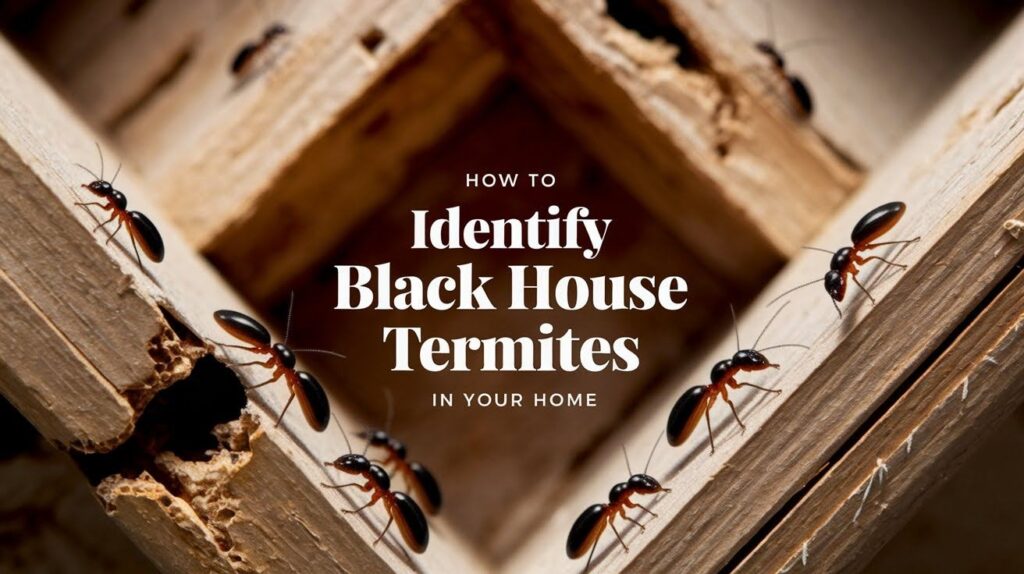After fifteen years in pest control, I’ve seen countless homeowners face the devastating reality of termite damage that could have been prevented with early detection.
Black house termites are among the most destructive pests threatening residential properties, capable of causing thousands of dollars in structural damage while remaining virtually invisible to untrained eyes.
These silent invaders work tirelessly behind walls, under floors, and within wooden frameworks, compromising your home’s integrity before you even notice their presence.
The difference between catching an infestation early and dealing with extensive damage often comes down to knowing what warning signs to look for. Trust me, recognizing these indicators can save you both money and heartache.
What Are Black House Termites?
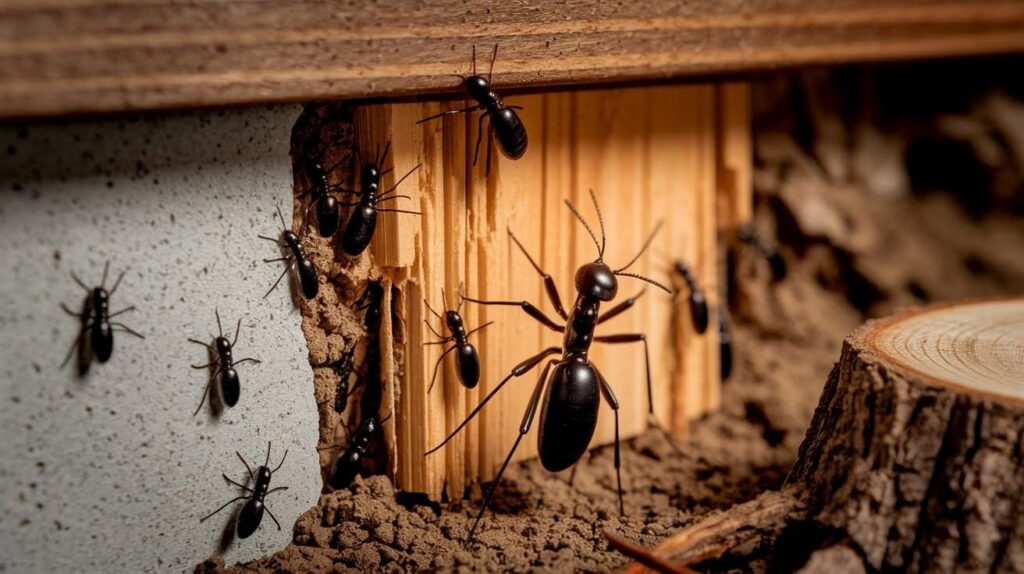
Black house termites, scientifically known as Coptotermes acinaciformis, are subterranean termites that have earned their reputation as Australia’s most economically significant timber pest.
Unlike their lighter-colored cousins, these termites have distinctively darker heads and bodies, making them relatively easier to identify once you know what to look for.
What sets black house termites apart from other species is their aggressive feeding behavior and preference for structural timber. While many termite species focus on decaying wood, black house termites actively attack sound, seasoned timber used in construction.
You’ll typically find these termites in areas with consistent moisture and wood contact. They commonly establish colonies near tree stumps, wooden fences, and anywhere timber touches soil.
In homes, they gravitate toward subfloor areas, wall cavities, and anywhere timber meets concrete foundations.
Key Characteristics of Black House Termites
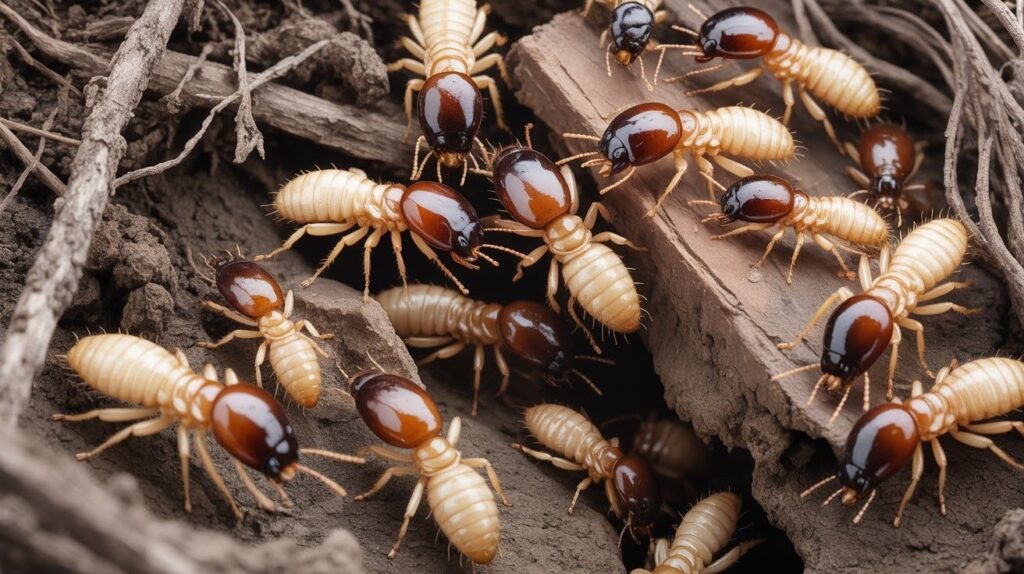
Color and Size
When you’re trying to spot black house termites, color is your first clue. These pests display a distinctive dark brown to black appearance that makes them stand out from other termite species.
Worker termites, which you’re most likely to encounter during an inspection, measure about 3-6mm in length with pale, cream-colored bodies and those telltale dark heads.
Habitat and Behavior
Black house termites are true underground dwellers, establishing their main colonies deep in soil where moisture levels remain consistent. They’re incredibly social insects, with colonies that can house hundreds of thousands of individuals working together in a highly organized system.
These termites require moisture to survive, which explains why they’re drawn to areas with water leaks, poor drainage, or high humidity.
Damage Caused by Black House Termites
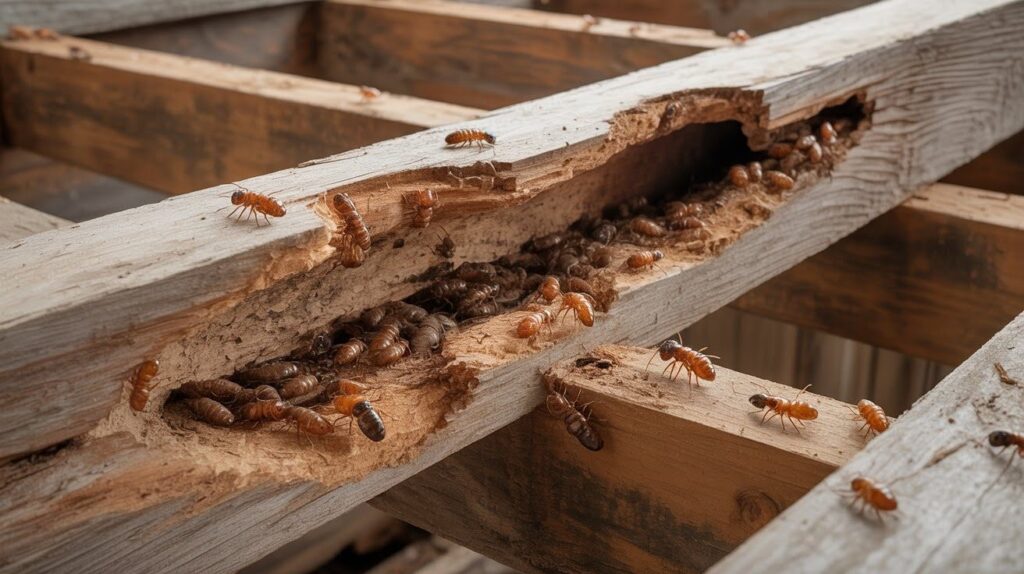
Structural Damage
I’ve witnessed firsthand how black house termites can turn a solid home into a structural nightmare. These voracious insects target the very bones of your house – support beams, floor joists, and load-bearing walls.
They have a particular appetite for damp or previously damaged wood, but don’t let that fool you into thinking healthy timber is safe.
What makes their damage so concerning is how they eat wood from the inside out, leaving only a thin outer shell that appears normal.
You might walk across a floor or lean against a wall that looks perfectly fine, only to have it give way under pressure because the internal structure has been completely hollowed out.
Long-Term Impact
The most frightening aspect of black house termite damage is its silent progression. These insects can work undetected for months or even years, systematically destroying your home’s foundation while you remain completely unaware.
Homeowners facing serious termite damage typically spend anywhere from $3,000 to $20,000 on repairs, depending on the extent of the infestation. I’ve seen cases where entire sections of homes needed rebuilding because the structural integrity was completely compromised.
Signs of Black House Termite Infestation
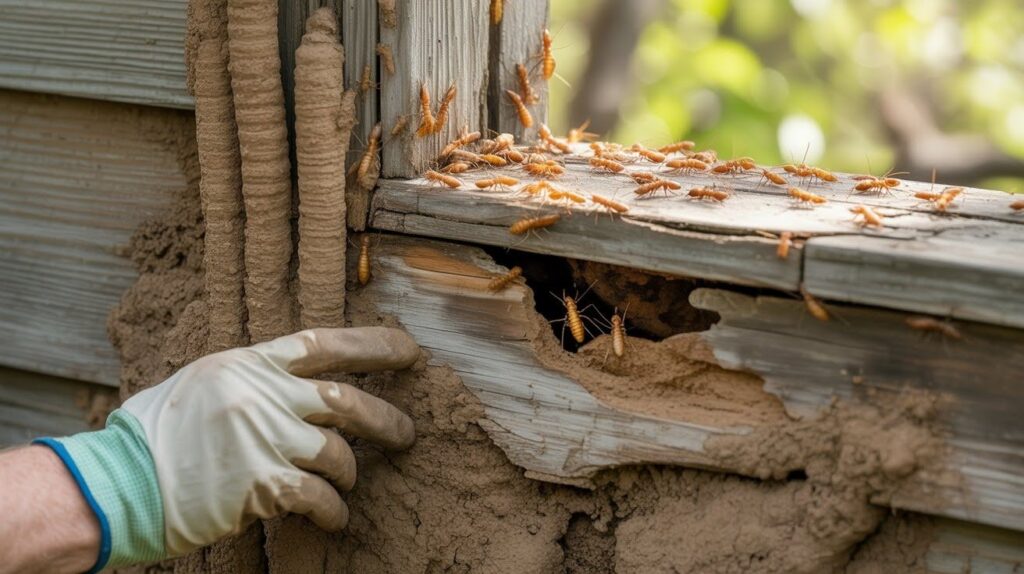
Visible Indicators
- Mud tubes on walls or foundations – These pencil-thin tunnels snake up walls, foundations, or wooden structures, serving as termites’ highways between their underground colony and your home’s timber.
- Discarded wings around windows and doors – Small piles of shed wings scattered near windows, doors, or light fixtures after reproductive termites complete their mating flight and choose your property as their next target.
Wood Damage Clues
- Hollow-sounding wood when tapped – Healthy wood produces a solid thunk when tapped, but termite-damaged wood sounds hollow or papery. Use a screwdriver to gently probe suspicious areas.
- Soft, thin, or discolored patches on wood – Look for wood that appears soft, feels spongy to the touch, or shows unusual dark staining that resembles water damage even in dry areas.
Seasonal Swarms
- Flying termites during spring – Large groups of winged reproductives emerge after warm, humid weather or rain, typically appearing near wooden structures rather than being confused with flying ants.
Black House Termites vs Other Insects
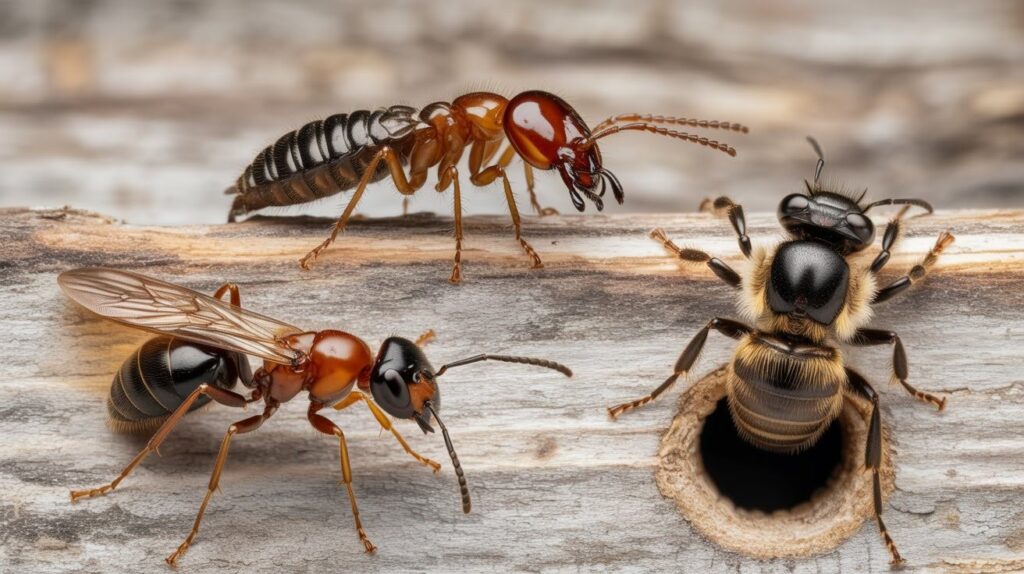
Termites vs Carpenter Ants
Many homeowners confuse termites with carpenter ants, but key differences help distinguish them. Termites have straight, beaded antennae and thick waists, while carpenter ants have bent antennae and pinched waists.
Termite wings are equal in length, whereas carpenter ant front wings are larger than back wings.
Termites vs Carpenter Bees
Termites are soft-bodied with pale coloring and work in hidden groups. Carpenter bees have hard, shiny black abdomens with fuzzy bodies and work alone, creating round holes in wood structures.
Prevention Tips for Black House Termites
Moisture Control
- Fix leaks immediately – Repair plumbing issues, roof damage, and ensure proper drainage around your foundation
- Direct water away – Position gutters to move water away from your house and maintain soil that slopes away from the foundation
Structural Barriers
- Seal entry points – Fill foundation cracks and gaps where termites might enter your home.
- Install professional barriers – Consider metal shields or chemical treatments during construction or renovation projects.
Wood Storage and Landscaping
- Maintain safe distances – Store firewood and mulch at least 20 feet from your house, keeping them off direct ground contact.
- Trim vegetation – Keep shrubs and trees from touching your home’s exterior walls or roof line.
Regular Inspections
- Schedule yearly checks – Have professional pest control specialists inspect your property annually to catch problems before they become expensive disasters.
How to Get Rid of Black House Termites
DIY Termite Control Options
While professional treatment is recommended, some homeowners try DIY methods first. Termite baits contain slow-acting poison that workers carry back to the colony, though results take several months.
Liquid termiticides create a chemical barrier around your foundation, but proper application requires specialized equipment and thorough soil coverage that many homeowners struggle to achieve effectively.
Professional Pest Control
Hiring qualified pest control experts offers significant advantages over DIY approaches. Professionals have access to commercial-grade products and understand termite behavior patterns, allowing them to target treatment precisely.
Most reputable companies provide treatment guarantees and follow-up services, meaning they’ll retreat your property at no cost if termites return within the warranty period.
Conclusion
Throughout my career helping homeowners protect their properties, I’ve learned that success against black house termites comes down to two critical factors: prevention and early action.
The families who implement proper moisture control, maintain structural barriers, and schedule regular inspections rarely face devastating damage. Meanwhile, those who ignore warning signs often end up with repair bills that could have funded years of professional protection.
Don’t wait until you hear hollow sounds in your walls or spot mud tubes crawling up your foundation. These silent destroyers work 24/7, and every day of delay gives them more time to compromise your home’s structure.
Contact a licensed pest control professional today for a comprehensive inspection – your future self will thank you for taking action now rather than dealing with costly consequences later.
Frequently Asked Questions
How can I tell if I have black house termites or regular ants?
Black house termites have straight, beaded antennae and thick waists, while ants have bent antennae and pinched waists. Termites also have wings of equal length, whereas ants wings are unequal in size.
What time of year are black house termites most active?
Black house termites are active year-round, but you’re most likely to notice them during spring when reproductive termites swarm. This typically occurs after warm, humid weather or following rain.
Can I treat a black house termite infestation myself?
While DIY baits and liquid treatments are available, professional treatment is strongly recommended for active infestations. Termites require specialized knowledge and commercial-grade products for effective elimination.
How much damage can black house termites cause to my home?
These termites can cause severe structural damage, weakening beams, floors, and walls from the inside out. Repair costs typically range from $3,000 to $20,000 depending on the extent of the infestation.
How often should I inspect my home for black house termites?
Professional inspections should be conducted annually to catch infestations early. You should also perform visual checks quarterly, looking for mud tubes, discarded wings, and hollow-sounding wood.

